Viking Age Arrow Heads - A summary
Images included here are hand drawn sketches and should be proportional and to scale.
Types:
- Bodkin
- Specialized for armour piercing, sharp point usually with a square cross section.
- Trefoil
- Specialized for armour piercing, sharp point with a trefoil (3-lobed) cross section. Often done with a solid section immediately behind the head. Perhaps for attaching burning material, perhaps to add mass.
- Leaf
- Hunting blade with a gently curving edge from the point.
- Diamond
- Hunting blade with straight edges.
- Cylindrical
- Hunting blunt (small game) with a round cross section.
- Pentagonal
- Hunting blunt (small game) with a pentagonal cross section.
- Ball
- Hunting blunt (small game) with a round cross section.
- Conical
- Simple point with a round cross section.
- V-Notch
- A flat blade with a notch in the end useful for hunting birds and cutting rigging ropes (not that I'm sure the vikings used it that way).
- Transverse
- A flat blade with a straight or gently curved edge. I have **NO CLUE** what one would use this arrowhead for. Everything I know says that it should fly badly and mostly likely glance off of anything it hit.
- Barbed
- Standard hunting or combat point.
- Multi-Barbed
- As above but with more than one set of barbs (more useful when fishing).
Viking Artefacts - A Select Catalogue,
Graham-Campbell, James, 1980, The Trustees of the British Museum,
ISBN 0 7141 1354 9, Published by British Museum Publications Ltd
#12 - 3 iron arrow heads
Provenience: Estuna, Uppland, Sweden
Museum: Stockholm: SHM 27761
Length: 15.7, 12.5, 6.3 cm
Type: Bodkin, Trefoil, Diamond
Notes: Find includes 245 arrowheads



#13 - Wood
Provenience: Hedeby, Schleswig-Holstein, Germany
Museum: Schleswig: LMS Hb.68; N 18-60; Q 229-60; vii; and Hb.68; N 39-50; Q 213- 10; viii; and Hb.67; N 24-55; 0 219-60: viii
Type: Cylindrical, Pentagonal, Ball
Notes: Three wooden arrow-heads cut or broken from their shafts of circular
cross-section. The first is itself circular in section (L 8.6; D 2.0
tapering to shaft of 0.9 cm). The second is pentagonal in section (L
9.5; W 1.9 tapering to shaft of D 0.8 cm), and the third has an
expanded club-shaped head (L3.8; D 1.5 with shaft of 0.8 cm).



#14 - Antler
Provenience: Hedeby, Schleswig-Holstein, Germany
Museum: Schleswig: LMS Hb.66; N 22 -65; Q 16 - 70; xi
Type: Conical
Notes: with a transverse perforation at its base containing a
wooden peg, surrounded by the remains of a wooden shaft. L 4.9; D 1.3 cm
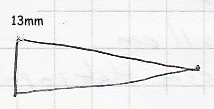
#267 - Iron
Provenience: Estuna, Uppland, Sweden
Museum: Stockholm: SHM 27761
Length: 15.7, 11.3 cm
Type: Trefoil
Notes: Same find as #12


Viking to Crusader, Else Rosedahl & D.M. Wilson, Publisher: Rizzoli (October 15, 1992), ISBN: 0847816257
#88 - Iron
Provenience: Norway, c. 800-1000
Museum: Vittenskapmusset T11190, T17696, T16477
Length: 18.1, 17.4, 10.3 (head only - tang unknown - its still on a shaft) cm
Type: V-notch, Diamond, Leaf
Notes: Leaf blade is on a 27" birch shaft



#118 - Iron
Provenience: Kjølstad, Sør-Odal, Hedmark, Norway, c. 10th c.
Museum: Universitetets Oldsaksamling, C37550 f,g,h
Length: 16.8, 15.1, 12.5 cm
Type: Bodkin, leaf, Diamond
Notes:


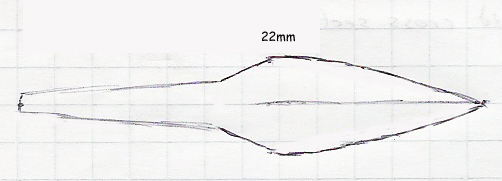
#208 - Iron
Provenience: Finland c. 1000-1200
Museum: Finlands National museum 18556:581, 588, 589, 583, 15767, 1174:11, 11070:13
Length: 13, 10.2, 22.7, 12.2, 22.4, 18.9, 11.3 cm
Type: V-Notch, Transverse, transverse, Diamond, V-Notch, Diamond (rhomboid), Multi-barbed,
Notes:
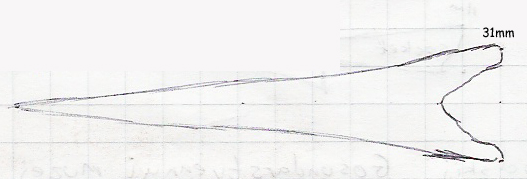
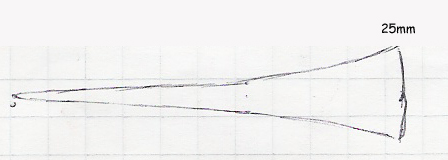





#238 - Reindeer Antler
Provenience: Vestvatn Skjerstad, Nordland, Norway, 11th/12th c.
Museum: Tromsø Museum Ts6251a,g,h,u,å,bå
Length: 13.3, 12.9 cm
Type: Barbed, Barbed
Notes:


#288 - Iron
Provenience: Gorodisce, near Novgorod, Russia, 9th-10th c.
Museum: Novgorodskij Gosundarstvennyi muzej K 36157/6, 117, 124, 177
Length: 6.8, 7, 7.1, 7.5 cm
Type: Barbed, Barbed, Barbed, Bodkin
Notes: First three are socketed.
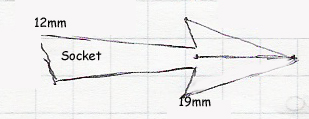
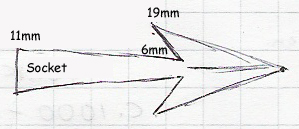
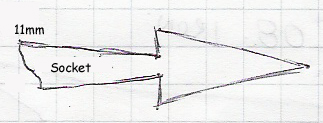

#294 - Iron
Provenience: Zaozere, mound 6, complex V, SE Ladoga region, obl. St. Petersburg, Russia, 10th-11th c.
Museum: Gosundarskvennyi Ermitnz 700/48-50, 52-55, 57-59, 61, 456
Length: unknown
Type: 3 bodkins, 1 transverse
Notes: Picture is too small to sketch
#340 - Antler
Provenience: Narsaq, Ruin Group 60V1-I-518 (Ø17a), Greenland, 11th c.
Museum: Danmarks National museum - no numbers given
Length: 10.7, 6.9 cm
Type: Diamond (rhomboid), Barbed
Notes:

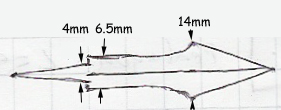
Vikings, North Atlantic Saga, William Fitzhugh and Elisabeth I. Ward, ed, Smithsonian (Washington and London), in association with the National
Museum of Natural History, 2000, ISBN: 1560989955
Fig 1-7 - Iron
Provenience:
Museum: Birka SHM 5208: 276-7
Length: 11 cm <see note>
Type: Leaf, Leaf
Notes: Two arrow heads are shown of different lengths but only one length is given.


Page 54
Notes: From the text. Complete arrows were found in Norway in the 1930s. Blunt arrow heads exist.































